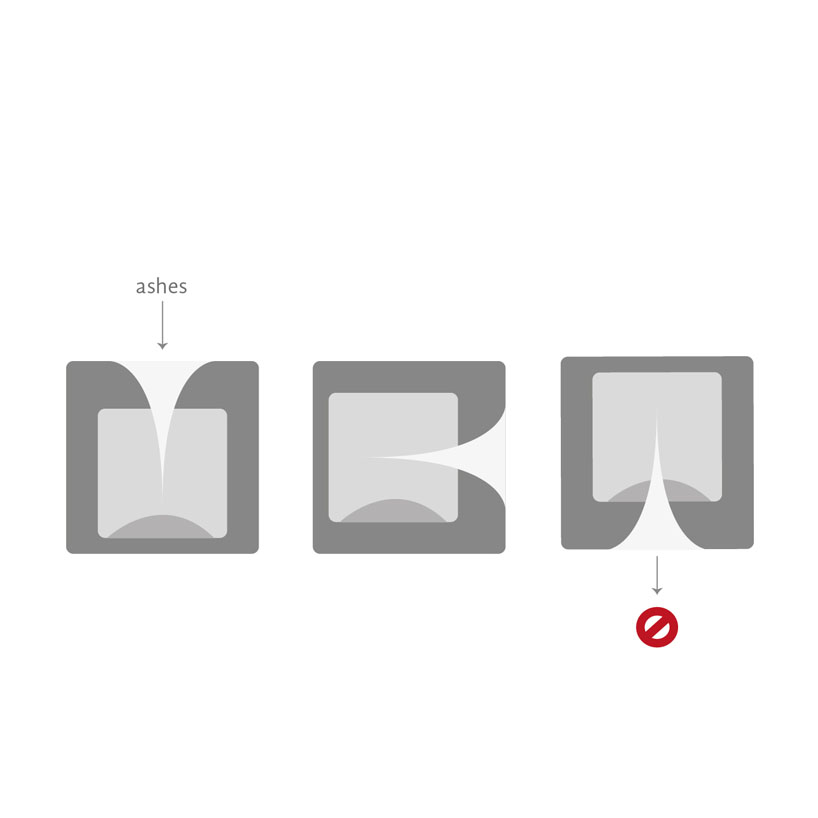
memento mori by *** from spain
designer's own words:
When death takes us, there's no turning back. No one comes back from the dead.
When the ashes enter the cinerary urn, just as we can not escape death's touch, they won't ever be able to get out again.
The urn has been designed to realize this metaphor.
The objective is to allow the ashes to enter the urn but prevent them from getting out thanks to a height difference system held inside the container. The mechanics are simple yet poetic at the same time. They allow the action of placing the deceased inside the urn to become a ritual in which the family and loved ones can take part. From my point of view, this surpasses the coldness of the existent burial procedures and allows to establish a metaphoric, poetic and spiritual bond.
The urns morphology consists of a cubic volume of 8.3 in. This geometry brings solemnity and presence to it. There is a conic funnel-like depression placed in the center of one of the faces which enters harmonically to the inside of the volume. It has a 5" diameter on the surface, 0.5" diameter stem and 5" depth.
Mortar has been chosen as the material as it is economic, malleable, resistant and long lasting. It is a robust and strong material. It is an atypical choice for a cinerary urn but it has been used traditionally for burial purposes. It has an ash-like chromaticism and its cold touch links it with the common notion of death. The holes that are created on the surface when the mortar sets give a plastic and visual attractiveness to it. It is a heavy and tough material, just as death is for most people.
Another attraction of the mortar lays in its impermeability. It can be placed both indoors and outdoors. It's neutral color allows it to be placed anywhere without distorting the environment while catching ones attention due to its simplicity and purity of shapes.
From my point of view, those who care about us don't need any kind of inscription or epitaph to remember who we were. This is why I did not include any inscription on the urn. However, if it is the client's wish, a silver plate could be placed on one of the sides to commemorate the deceased. The mortar cannot be engraved itself, as it would break.
I don't think it should be customizable. Quoting Séneca: "Aequat omens cinis". This means "Ashes equalize everyone". Following this criteria, all the urns should be the same except for the holes on the surface which would provide a unique aspect to each one, just as each person is different.
This being said, I understand that this project should have a larger commercial use and I did contemplate, for such a purpose, to build the urn using aluminum. This material also offers the ash-like aspect and coldness of touch. It is suitable for both indoors and outdoors and is substantially lighter than mortar. It offers the possibility of engraving the urn itself instead of a plate, allowing for a larger inscription.
Sketch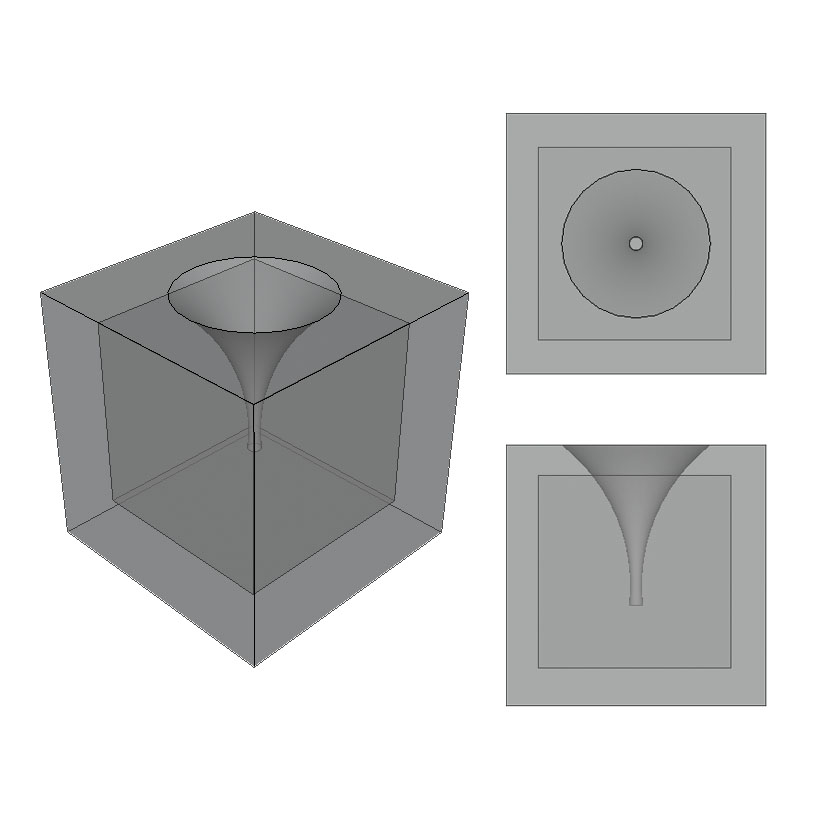 3D modeling
3D modeling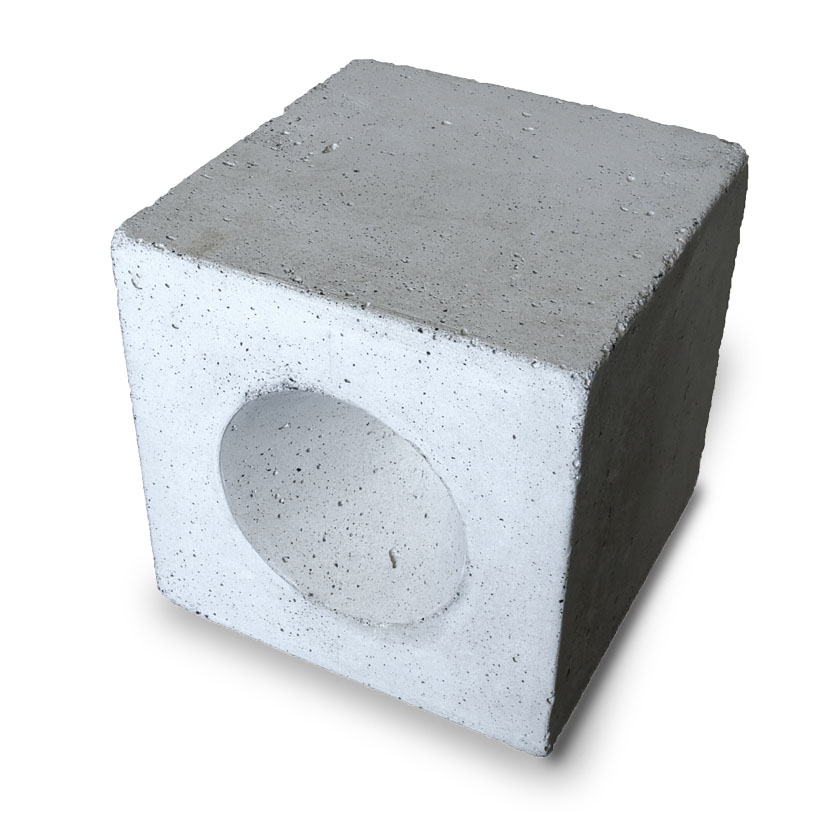 Prototype
Prototype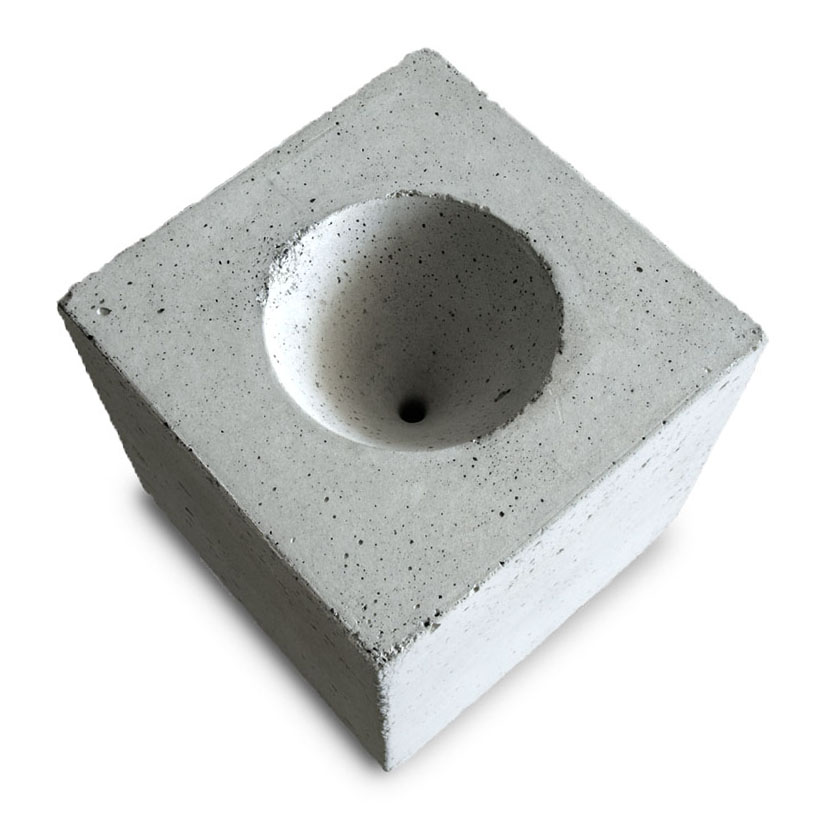 Prototype
Prototype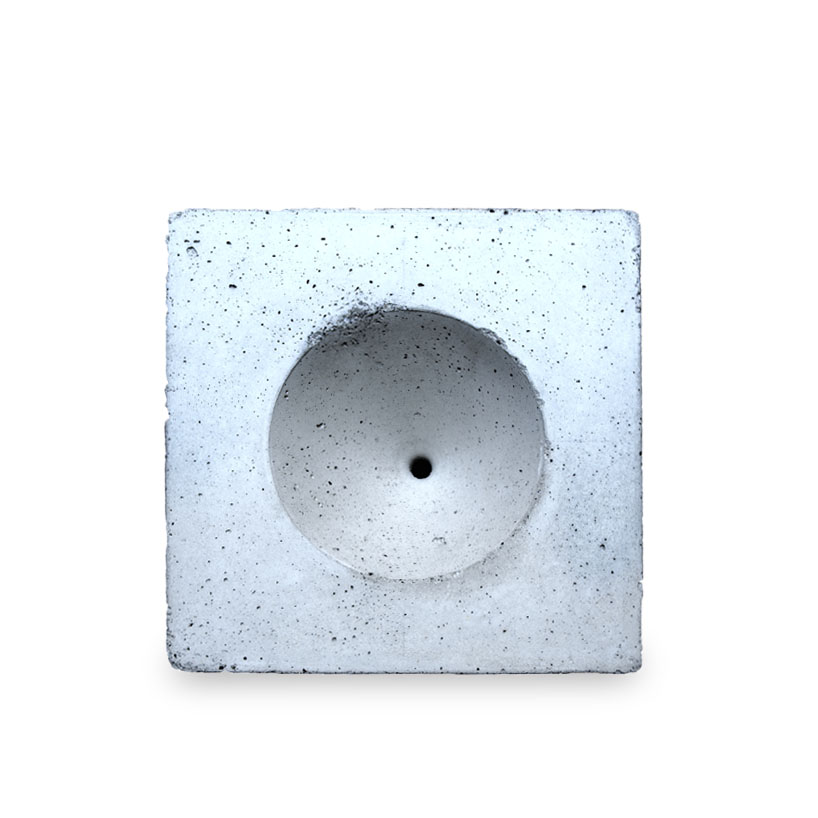 Prototype
Prototype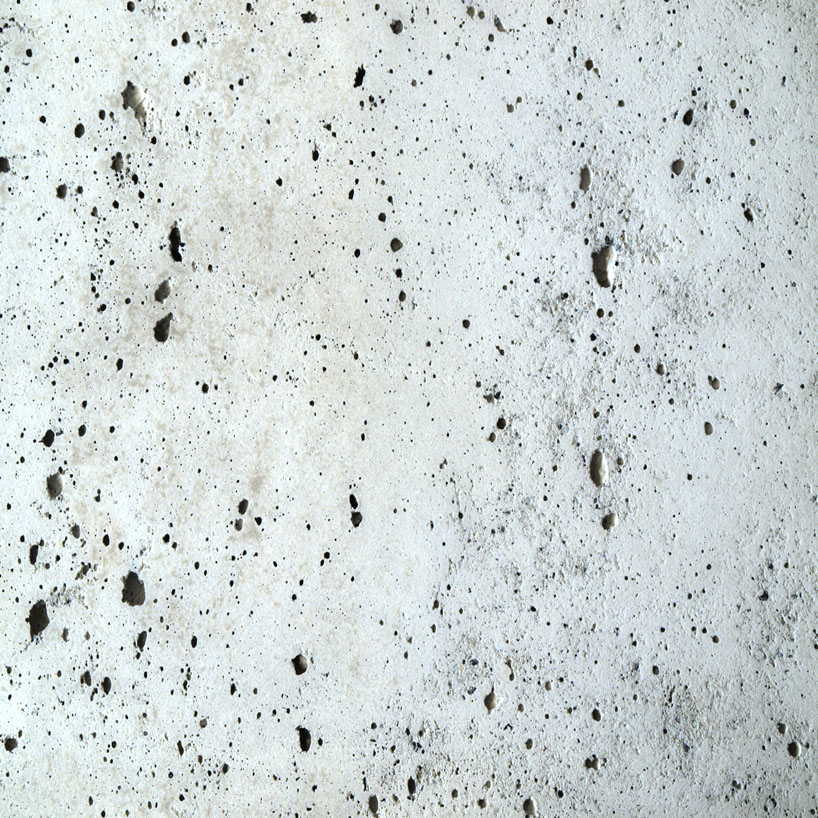 Mortar texture
Mortar texture